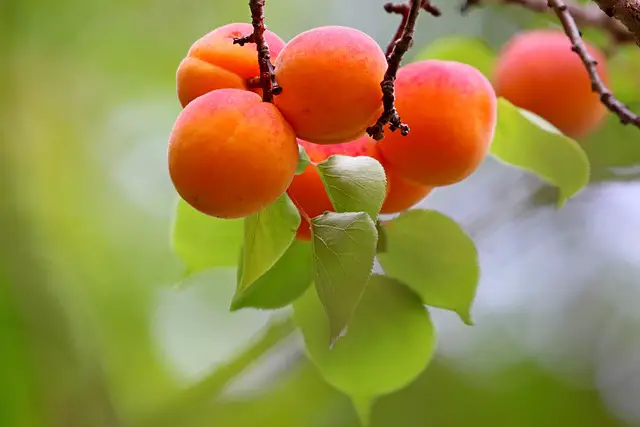
We may receive commissions from purchases made through links in this post, at no additional cost to you.
Have you ever tasted a fresh-picked apricot right off of the tree? If you have, I’m sure you’ll agree that it’s completely different than the dry, mealy, tart apricots from the grocery store (if you’re lucky enough to find them there).
Apricot trees are the perfect choice for home gardens – as long as you pick the right variety for your area. Just like other stone fruits, apricots need a certain amount of cold over the winter in order to bloom and fruit the next year. Thankfully, there are many varieties that need only a small amount of chill hours – perfect for my mild-winter climate.
The best-tasting low-chill apricot varieties include ‘Goldkist’ (300), ‘Blenheim’ (300-500), ‘Tropic Gold’ (350), and ‘Golden Sweet’ (400-500). To get a more consistent crop, choose an apricot variety that corresponds to the average chill hours for the area, that will bloom after the last frost date.
Selecting the right apricot for your climate is probably the most important step in successfully growing apricots at home. Read on to see not only a list of the tastiest apricots to grow in warm climates, but to learn more about chill hours and how to best care for apricots in low-chill areas (there are a few key differences).
Why are chill hours important for apricots?
The term chill hours (also called “chill units”) refers to the cumulative amount of time spent between 32° and 45°F over the winter, minus any time spent over 60°F. Many fruit and nut trees need a specific range of chill hours in order to form new buds and leaves in the spring.
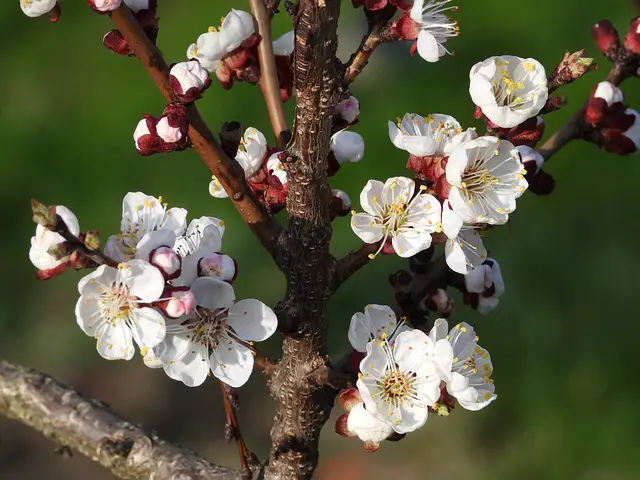
The onset of cold weather in late fall signals the tree to go dormant so it can protect itself from harsh winter weather. Even in mild climates, where temperate fruit trees can’t withstand the killing freezes of other regions, trees still need a period of cold to regulate growth.
Once the tree experiences enough chill hours, hormones signal that it’s time to break dormancy and allow buds to develop as the weather warms. And it doesn’t have to be exact – a discrepancy of 50 or 100 chill hours either way won’t make a big difference. But what happens if, say, an apricot tree gets significantly more or less chill hours than it needs?
If an apricot tree receives more chill hours than are required…
Excessive chill hours don’t necessarily affect the health of the tree, but it may affect the size of the crop. The biggest problem is that the tree may come out of dormancy before winter is actually over, especially if there is a warm spell. A frost will likely kill any tender new buds that are just emerging, reducing or eliminating that year’s fruit crop.
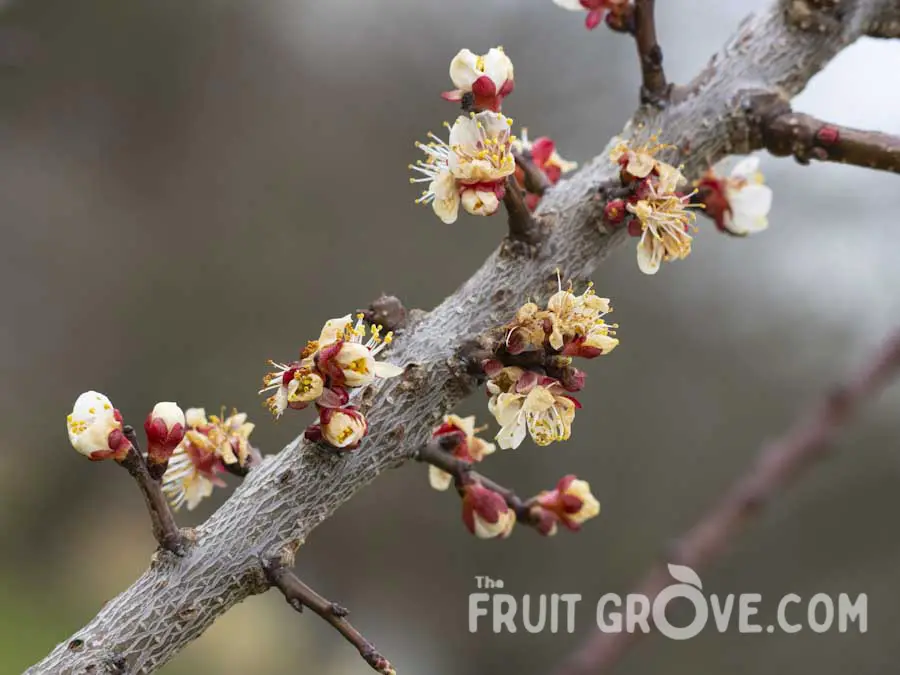
If an apricot tree doesn’t receive enough chill hours…
A significant lack of chill hours may prevent an apricot tree from blooming at all, or at the right time. Often in a warm-winter year trees will delay bloom, and then only blossom a little at at time, extending the blooming season.
This may sound like a nice idea – except that a longer bloom time makes the tender blossoms susceptible to frost damage or diseases, and can lead to reduced fruit set or lower fruit quality.
One winter with inadequate chill hours won’t hurt a tree over the long term. But, several seasons of excessively low-chill winters will result in stunted growth and eventual death of the tree.
Growing Apricots in Low-Chill Areas
The easiest way to find the average chill hours for your area is to talk to someone. Contact your local extension service, or talk to a local grower or nursery owner. Here’s a very general chill hour map of the United States. Maps like this can be helpful to give you an estimate of the average chill hours for your location, but it’s not very detailed.
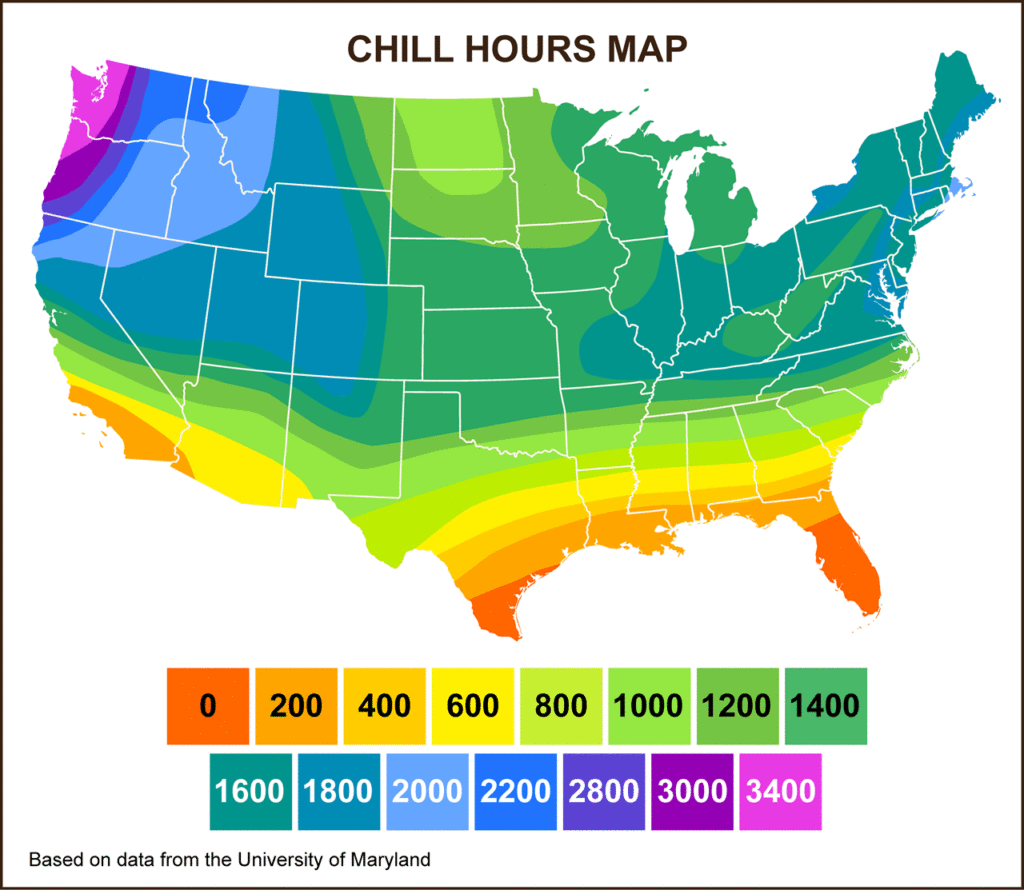
You can also find chill hour maps and charts for smaller areas online (here’s one for Florida, for example). Chill hours can vary widely, even nearby, so it’s important to get a good estimate for your specific location.
Most nurseries will include the chill hour requirement for a specific tree right on the website or plant tag, so you can be sure it corresponds to your climate. I’ve also included this information in my list below. But chill hours aren’t the only thing to be aware of when growing apricots in warm areas.
Plant in Full Sun
Apricot trees need full sun (6-8 hours), like just about every other fruit tree. But if you live in an area with very hot summers, don’t be afraid of a little afternoon shade. Trees can get stressed or damaged by extreme heat (just like people). I’ve found that planting my fruit trees in spots with some late afternoon dappled shade has helped them perform better.
Pick the Right Fruiting Time
If you live in an area with very hot summers, choose an apricot tree that fruits a little earlier in the summer in order to beat the extreme heat. The high heat of summer can damage fruit, so you want to pick those apricots while the temperature is relatively mild.
Related: Harvesting Apricots: When Are They Ready to Pick?
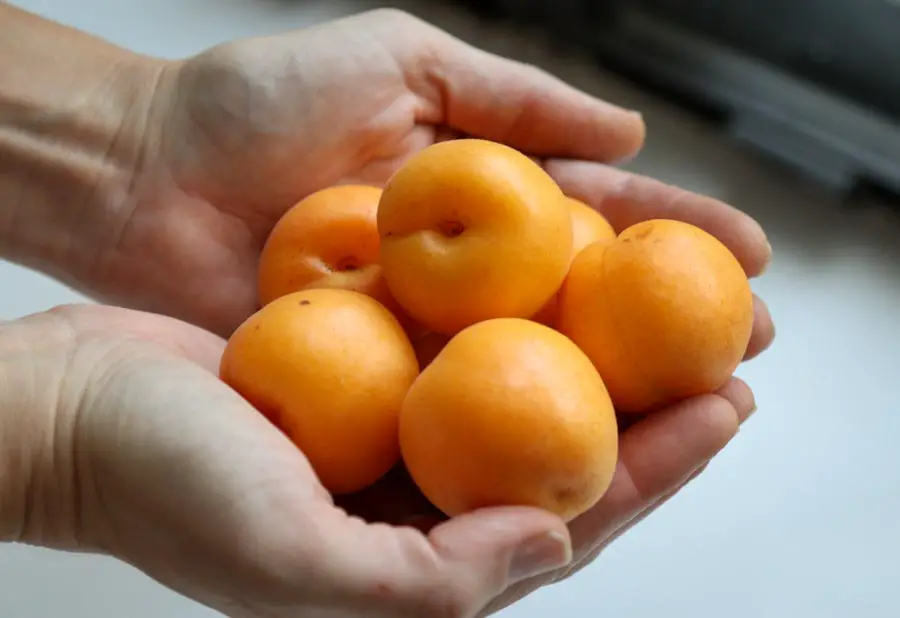
I live in East Texas, zone 8b, where we have long summers that get very hot and humid. I have a ‘Golden Sweet’ apricot tree, which is often labeled as a late-season apricot. However, it ripens for me in mid to late June, which is nowhere near the end of the summer in my area. But spring weather starts early for me (February, typically), so the fruit is ready by June, before the triple-digit temperatures of late July and August.
Pick the Right Bloom Time
Bloom time is another important consideration alongside chill hours. I live in a moderately low-chill area, about 600 chill hours, but we are very susceptible to late frosts. We will often have stretches of warm weather in January, only to be followed by a hard frost in February or early March.
As you can imagine, this can trick the tree into blooming too early only to be damaged by the freeze. So I needed to choose a later-blooming apricot cultivar to resist those spring frosts.
Learn more about how and when apricots blossom, as well as which cultivars bloom at different parts of the season here: When Do Apricot Trees Flower? Best Varieties by Bloom Time.
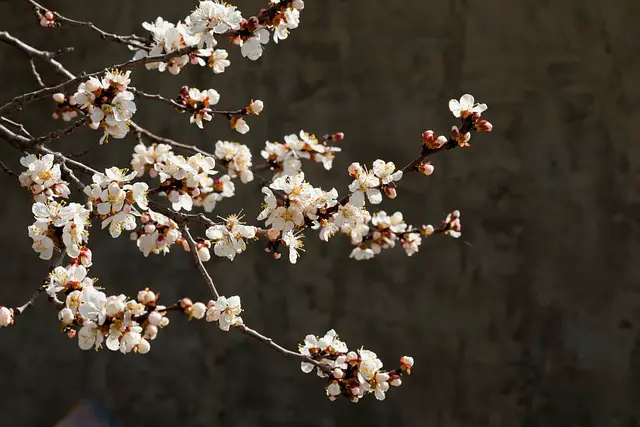
Other very low-chill areas (200-400 chill hours), can get away with apricot varieties that bloom much earlier. If you can, choose multiple apricot varieties that bloom and ripen throughout the season – so you can have fresh picked apricots all summer.
Choose the Right Location
The ideal climate for apricot trees is semi-arid with cool winters and warm summers (like the apricot’s native Asian and Mediterranean areas). For those of us not in these ideal conditions, the specific planting location can make a big difference.
Like I mentioned before, choose a spot with some partial afternoon shade if you are worried about extreme heat. Apricots also hate soggy soil, so make good drainage a priority. Planting an apricot tree on a mound or in a raised bed can greatly improve drainage, especially in areas with very wet winters or springs.
Prune in Winter and Summer
The best time to do major pruning is in late winter or early spring while the tree is still dormant. But apricot trees tend to grow very vigorously in warm climates (I write from experience…we’re talking several feet per year). Light spring and summer pruning can help keep the growth in check and conserve the tree’s energy for fruiting.
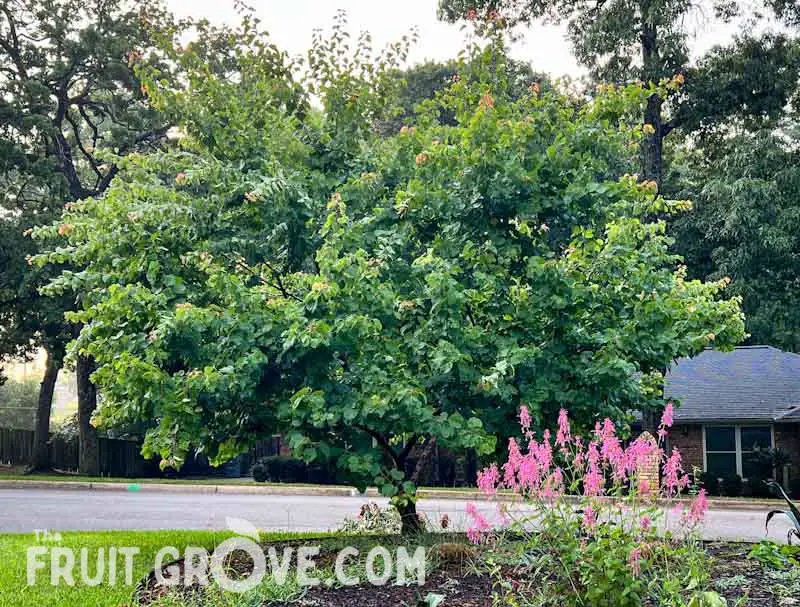
As the tree grows, thin out areas around ripening fruit to increase light exposure. More sunlight means sweeter, better-tasting apricots. You can also tip prune or thin out any long branches or excessively dense parts of the tree. Keep any pruning during the growing season light, however, so you don’t cause the tree stress.
The Best Low-Chill Apricot Varieties
The following are some of the best performing apricot cultivars for all kinds of low-chill climates. I’ve included information about what type of climate each variety is suited for, where that information is available. New hybrids and improved cultivars have become available in recent years, allowing apricots to be grown in regions where they’ve traditionally struggled.
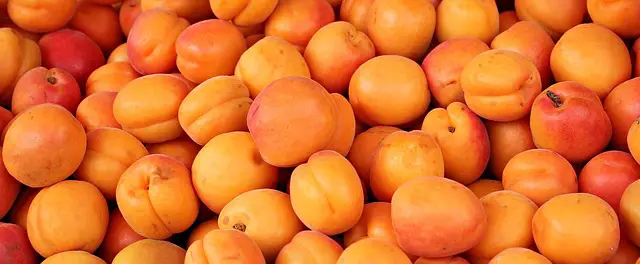
‘Katy’
- Chill hours: 200-300
- Growing zones: 7-10
- Harvest time: Early season (May – June)
‘Katy’ grows large, flavorful, freestone apricots with a pleasant mild sweetness. It grows well in temperate and desert climates. Blooms early. Self-fertile.
‘Goldkist’
- Chill hours: 300
- Growing zones: 7-10
- Harvest time: Early season (May – June)
‘Goldkist’ is known as one of the easiest low-chill apricots to grow in temperate areas. It is more productive and has more consistent crops than other popular varieties, such as ‘Blenheim’. The apricots are large, sweet, firm, and freestone. Early blooming. Self-fertile.
‘Tropic Gold’
- Chill hours: 350
- Growing zones: 6-9
- Harvest time: Mid-late season (June – July)
The apricots of ‘Tropic Gold’ are medium-to-large sized, sweet, and flavorful. ‘Tropic Gold’ grows well in areas with mild winters. Blooms in early spring. Self-fertile.
‘Blenheim’
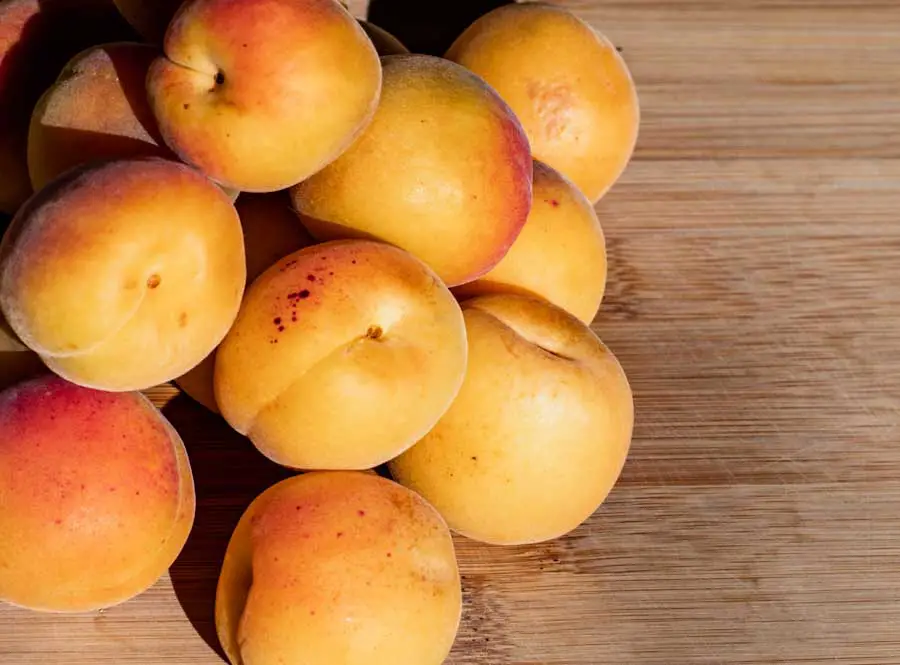
- Chill hours: 300-500
- Growing zones: 5-9
- Harvest time: Midseason (June – July)
‘Blenheim’ apricots are grown widely in California, and are well suited to temperate, desert climates. It blooms very early, making it susceptible to spring frosts. The medium-small fruits have orange skin and exceptional flavor – sweet, firm, and very juicy. The crop can be inconsistent, especially in areas with wet winters and springs (‘Blenheim’ prefers dry spring weather). Self-fertile.
‘Royal Rosa’
- Chill hours: 400-500
- Growing zones: 7-10
- Harvest time: Early season (May – June)
‘Royal Rosa’ grows sweet, juicy, light orange apricots. It is very productive and can begin producing fruit in its first couple of years. ‘Royal Rosa’ is a very vigorous, disease resistant tree. Early blooming. Self-fertile.
‘Golden Sweet’
- Chill hours: 400-500
- Growing zones: 6-9
- Harvest time: Midseason (June – July)
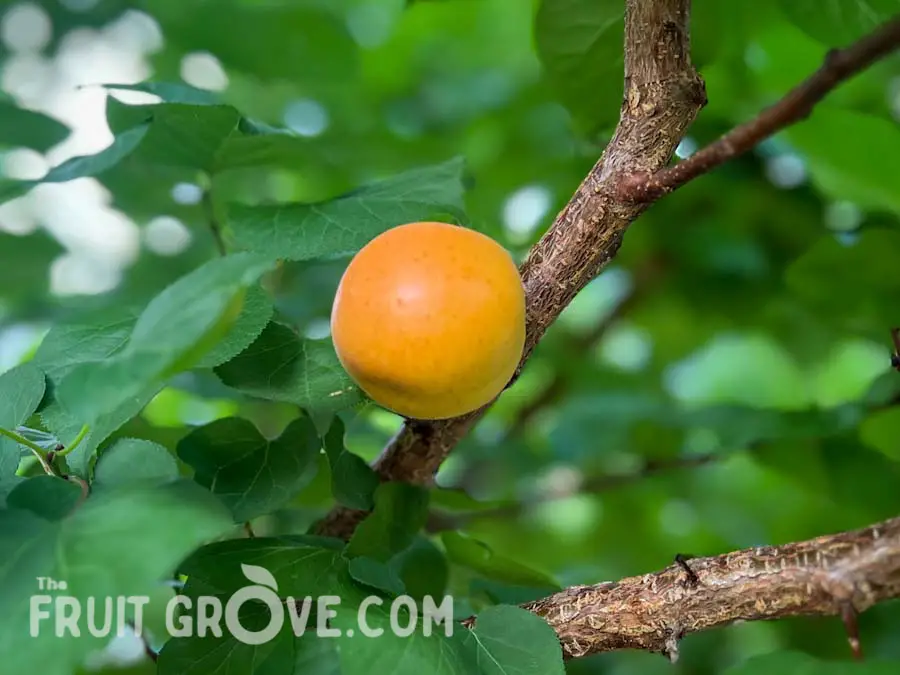
‘Golden Sweet’ apricots are medium to large, very sweet, and have bright golden-orange skin. It blooms later in the spring, making it better able to withstand spring frosts. It’s very adaptable to different climates, but it can grow very vigorously in warm areas. Produces a very consistent crop (in zone 9, some winters may not get enough chill hours). Very attractive, spreading canopy. Self-fertile.
‘Flavor Delight’ Aprium
- Chill hours: 300
- Growing zones: 6-10
- Harvest time: Midseason (June – July)
Apriums are apricot-plum hybrids, although the flavor and look is closer to an apricot. ‘Flavor Delight’ grows well in areas that have traditionally been challenging for apricots. The fruit is sweet with a combination of apricot and plum sweetness and acidity. Early blooming, self-fertile.
‘Cot-N-Candy’ Aprium
- Chill hours: 400
- Growing zones: 7-10
- Harvest time: Midseason (June – July)
‘Cot-N-Candy’ is a white plum and apricot hybrid, with very sweet, pale creamy flesh and light golden skin. The tree stays compact (12-15) and is a heavy producer. ‘Cot-N-Candy’ is self fertile, but works as a good cross-pollinator for other apricots.

